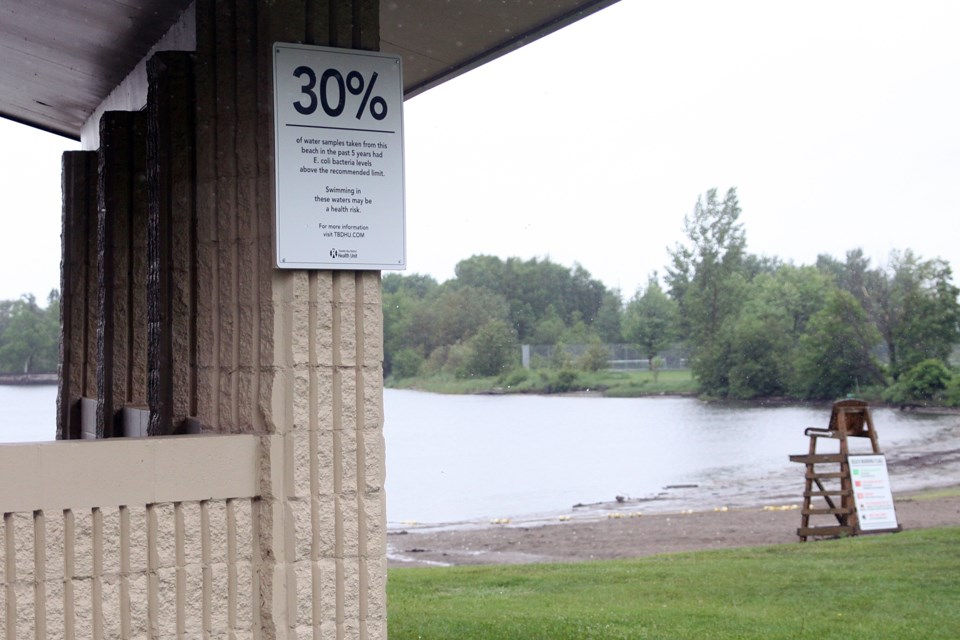THUNDER BAY – Three city beaches will now have permanent signs warning for potential risk of bacterial infections.
The Thunder Bay District Health Unit on Wednesday announced the advisories would be in place at Boulevard Lake and the two Chippewa beaches, due to a history of higher levels of E. coli.
Prior to this year water samples would be collected during the summer every Monday and tested. If they showed elevated amounts of E. Coli, the beach would be placed under a temporary advisory. If the levels were deemed safe, the beach would remain clear until tested the following week.
But Lee Sieswerda, the health unit’s manager of environmental health, said that procedure didn’t reflect changes to the water.
“The postings that would go up Tuesday afternoons were reflective of beach conditions on Monday morning,” Sieswerda said. “Beach conditions change a couple of times a day at least. I think it was giving people a false sense of security, potentially, if there was no sign there.”
The beach with the highest frequency of elevated E. coli levels was the main beach at Chippewa Park, which had high amounts 40 per cent of the time from water samples tested over the past five years. The main beach at Boulevard Lake showed elevated levels on 30 per cent of the tests.
Sandy Beach at Chippewa Park was found to have elevated levels 10 per cent of the time.
A sign with the frequency has been posted at each beach.
Sieswerda said while there have been no reported cases of E. coli due to swimming, the bacteria can cause eye and skin irritations with the potential for a gastrointestinal outbreak.
“When there’s high levels of E. coli it’s because of feces. It’s mostly birds,” Sieswerda said, adding it is different than swimmer’s itch.
“Anyone who has been to a beach around Thunder Bay knows when it is goose season. Things like a lot of waterfowl, if the beach isn’t cleaned up regularly or wind, water and waves that stir up the sediments on the bottom can also drive E. coli up into the water.”
While the advisories will be posted permanently at each beach, it does not mean people can’t swim, Sieswerda said.
“This is just providing people with information about how often they can expect to find high levels of E. coli in the water that they’re swimming in,” Sieswerda said. “It’s just an advisory.”
